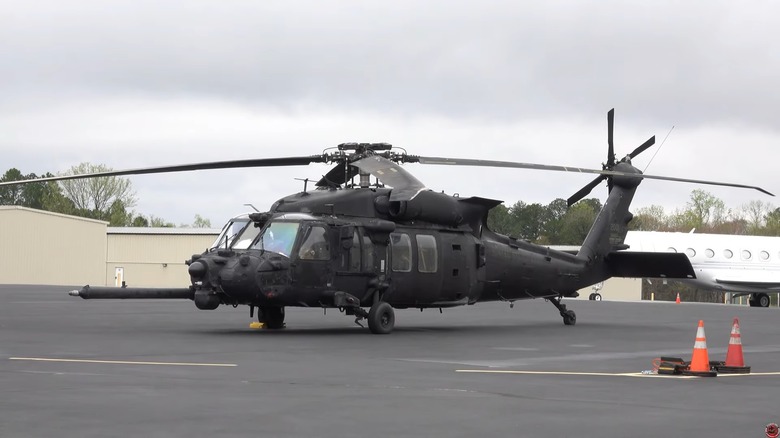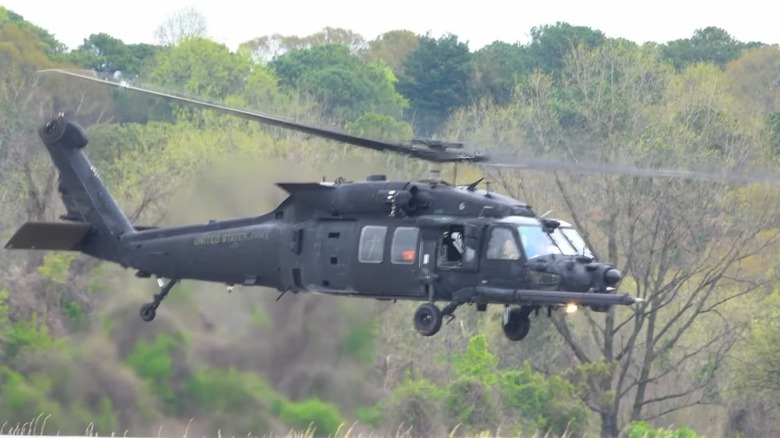Which Helicopters Did The US Use In The Bin Laden Raid & What Made Them Special?
On May 1, 2011, the United States military sent two helicopters loaded with members of SEAL Team Six into Abbottabad, Pakistan, in Operation Neptune Spear. The raid was intended to capture or kill Osama bin Laden, the leader of Al-Qaeda. It resulted in his death. The world was stunned when President Barack Obama revealed this during a special press conference, where he outlined only the broadest details, as much of the operation, including the personnel, tactics, and equipment used, was classified.
To enter Pakistan without permission and without alerting the nation's air defenses was an impressive accomplishment, made possible by the specially designed and highly classified stealth helicopters they flew. To this day, the full nature of the choppers has remained a tightly-guarded secret, and they've never been shown to the public. The images featured in this article are of Special Operations Command (SOCOM) MH-60 Black Hawk helicopters, of which the U.S. has many.
They were highly modified for stealth operations, and the only reason anyone knows about them is because one was damaged in the raid. It was destroyed on-site, but images of the wreckage and its pieces have been shown by various media outlets. That debris helped China develop its own upgraded Z-20 stealth helicopter (based on the U.S. MH-60), so the operation wasn't entirely successful in destroying the damaged equipment beyond recognition. While little is known about the choppers used in the raid, what is available about their capabilities suggests the U.S. has some seriously upgraded UH-60Ms in its inventory.
The stealth MH-60M Black Hawk helicopters used in Operation Neptune Spear
Helicopters are inherently loud, thanks to the massive rotor blades whipping through the air during flight. Decreasing the sound while also reducing a helicopter's radar signature isn't easy, and the first time the U.S. used them was during Operation Neptune Spear. Surprisingly, these weren't the first attempt at making stealth choppers, as the RAH-66 Comanche was a stealth helicopter, but it never made it further than the prototype stage.
Changes to the MH-60's fuselage were made to reduce its radar signature while other areas had to be covered with radar-absorbent material, and the tail fin was made completely smooth. Some of these features were identified by aviation experts following the raid, as the wreckage became public knowledge. The tail appeared to have five or six blades (instead of four), which would reduce the rotation speed and noise.
A Pakistani official told the BBC that they didn't see the helicopters on their radars until they left the country and entered Afghanistan airspace. They picked up four helicopters flying low to the ground, which could be true. It's believed that another stealth chopper might have been used as a pathfinder, while two CH-47 Chinooks likely provided backup. Of course, much of this is speculation and analysis made by people looking at debris, so it should be taken with a grain of salt. It's possible the U.S. will one day reveal its stealth, low-observable helicopters, but as of this writing, that has yet to occur.

